Transformation Strategy 2022 - 2027
In this section
Workplace
1. Overall aim
To exploit the opportunities presented by a move to hybrid working to further rationalise the Council’s accommodation portfolio and to modernise and improve the working environment within the remaining core buildings.
2. What do we need to transform and why?
The Council’s property portfolio encompasses a range of buildings including office buildings, operational depots, schools, community, and leisure facilities. One of the aims of the Agile Working project which was rolled out across the authority between 2017-18, was to adapt designated Council building, to create a work environment that supported the transition to a more agile way of working. This involved changes to the internal design and layout of some buildings to create more suitable, open plan office environments, together with the use of designated hot-desking facilities.
The impact of the Covid-19 pandemic has further accelerated the use of hybrid working, which now provides further opportunities for the Council to rationalise its building stock.
The move away from full time office working naturally means that we will probably need less buildings in the future, and that we may need to re-purpose those we decide to retain. It will be important to develop an evidence base on accommodation need versus demand to ensure that the hybrid model is meeting the needs of services and to determine future strategy.
Office working requirements will be met through the establishment of central hubs in the key towns, which will then allow other buildings to be released for sale or rent. This will provide an opportunity to deliver financial savings, but also for the Council to consider how it can modernise its remaining building assets (including operational depots), to ensure that it can support the needs of a modern workforce and increase footfall in town centre locations.
3. Key Objectives
- Strengthen the Authority’s approach to asset management to support financial, economic, social, cultural, and environmental objectives.
- Clarify the Authority’s vision for future accommodation and improve the performance management of assets. Apply and embed sustainable development principles in the way we plan, deliver, and monitor the management of assets.
- Oversee the delivery of a property rationalisation plan to reduce the portfolio by up to 50%, lowering building maintenance and utility costs: with an increased emphasis on asset transfer and energy efficiency.
- Work in partnership with managers, staff and trade unions to create inclusive workspaces that support staff wellbeing and better service delivery. Workspaces will be consistent, well equipped, and fit for purpose. Support a shift to more people working remotely, helping them to build on progress made during the pandemic and better understand the benefits of remote working.
- Strengthen ongoing management and maintenance of buildings to ensure that facilities are delivered in the cost efficient and sustainable way whilst meeting the needs of building users.
- Ensure the development of strategies and plans to support sustainable development and contribute to Net Zero Carbon targets. Encourage and empower staff to be innovative when commuting to the workplace and when travelling as part of their day-to-day work.
- Work in partnership with the wider public sector, through the PSB, to make best use of resources across organisations in Carmarthenshire.
- Present staff with increased choice and opportunity to live and work in their local communities promoting a good work/life balance and wellbeing. Ensure that accommodation, systems, and technologies are available to staff to support this hybrid model of working.
4. What are our priorities for the coming year and beyond?
- Develop a strategic Office Accommodation plan 2023 – 2028 to deliver rationalisation of the estate. This plan to be agreed and signed off corporately by January 2023.
- Deliver accommodation plan:
- Carmarthen:
- Confirm Carmarthen town workplace requirements for all services by November 2022.
- Review County Hall and 3 Spilman Street considering, mechanical and electrical constraints and office layouts to increase capacity by January 2023.
- Update the fire management plans for 3 Spilman Street and County Hall by January 2023.
- Relocation plan for different services by December 2022.
- Produce a phased plan for moves by December 2022.
- Ammanford:
- Deliver report on condition and refurbishment costs of Ammanford Town Hall. Complete.
- Work with Housing to develop a plan for Old Library and the Cennen Centre by February 2023.
- Develop a plan to optimise use of Ty Parc-yr-hun by February 2023.
- Llanelli:
- Implement new layouts for 1st and 2nd Floor Ty Elwyn to support hybrid working and increased workplace capacity by November 2022.
- Relocate Housing staff from East Gate to Ty Elwyn by November 2022.
- Review occupation proposals for the remainder Ty Elwyn with a view to consolidating staff from Eastgate and Town Hall into Ty Elwyn by February 2023.
- Create a sub-letting plan for Eastgate by February 2023.
- Carmarthen:
- Review delivery of multi-agency hubs in the 10 towns by March 23.
- Deploy the ‘Occupeye’ Resource Management and booking system by January 2023.
- Develop an integrated travel and parking plan for retained buildings by January 2023.
- With parking rationale for County Hall and Spilman.
- Set up 6 corporate hybrid meeting spaces across the county, available to all through a booking system. Complete.
- Develop a set of performance and outcome measures for assets and monitor at a corporate level by January 2023.
- Collect and review the data gathered by the Occupeye system by March 2023.
- Review the role of the ‘Premises Responsible Person’ (PRP). Develop options and suggestions on a way forward to deal with the responsibilities of the role in a hybrid environment by June 2023.
5. How will we measure the impact of this work?
- Supporting workforce/service efficiency & wellbeing
- Revenue & capital savings
- Environmental benefits
- Building utilisation
- Numbers of staff working remotely on a regular basis
- (Occupeye?)
- ICT logon data from ICT systems
- Chubb door entry system
